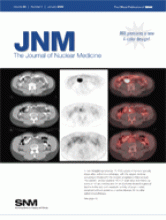REPLY: We are thankful for Dr. Piepsz's thoughtful critique. The report presents the first data that show that a parenchymal 99mTc-mercaptoacetyltriglycine (MAG3) transit disturbance, that is, delayed tissue tracer transit (TTT), is accompanied by functional decline and by reorganization of renal tissue (1). The exciting result is that a reduced filtration fraction, recognized by delayed TTT, leads to morphologic reorganization. We did not intend to predict future function based on TTT in this report. We agree that an abnormal response to furosemide, and low split renal function at entry, fail to predict risk. We selected these parameters because they are widely used in the evaluation of hydronephrosis and for selecting kidneys that go on to therapy.
The cited statement “a delayed TTT of 99mTc-MAG3 should identify those kidneys whose function is at risk” is 1 of 6 assumptions that the tested pathophysiologic model assumes. Obviously, we believe that delayed TTT will identify kidneys whose function is at risk. It should, however, be recognized that this was not concluded. We presently have a clinical study in revision in which we compared TTT, furosemide stimulation, and split renal function at entry with respect to their ability to predict functional development.
Footnotes
-
COPYRIGHT © 2009 by the Society of Nuclear Medicine, Inc.
References
- 1.↵







